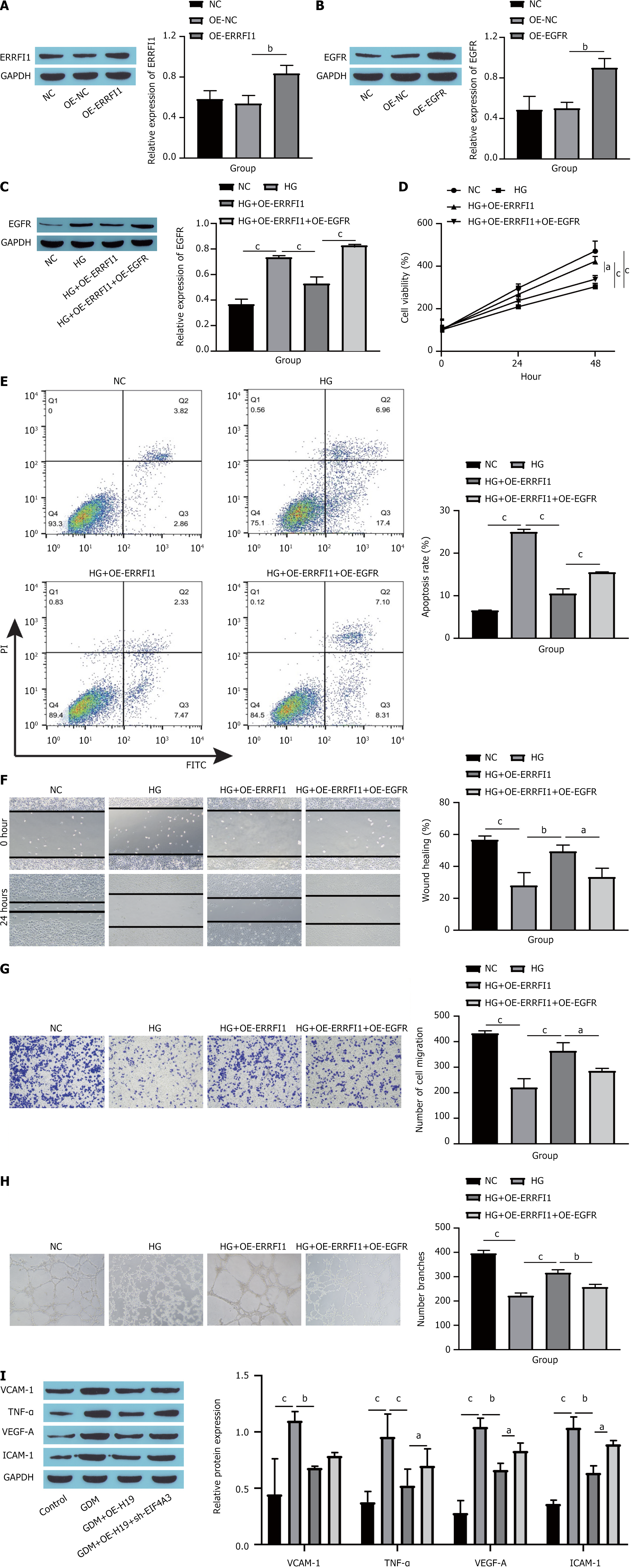Copyright
©The Author(s) 2025.
World J Diabetes. Jun 15, 2025; 16(6): 105173
Published online Jun 15, 2025. doi: 10.4239/wjd.v16.i6.105173
Published online Jun 15, 2025. doi: 10.4239/wjd.v16.i6.105173
Figure 8 ERRFI1 binds to epidermal growth factor receptor and inhibits its activity to suppress high glucose-induced human umbilical vein endothelial cells dysfunction.
A: Western blot showing ERRFI1 overexpression efficiency; B: Western blot showing epidermal growth factor receptor (EGFR) overexpression efficiency; C: Western blot showing EGFR expression in cells; D: Cell counting kit-8 assay showing cell viability; E: Cell apoptosis as detected by flow cytometry; F: Cell migration as assessed by scratch experiments; G: Cell migration as assessed by Transwell assay; H: Angiogenesis as assessed by tube formation assay; I: Western blot showing the expression of endothelial cell dysfunction markers. aP < 0.05. bP < 0.01. cP < 0.001. EGFR: Epidermal growth factor receptor; GAPDH: Glyceraldehyde-3-phosphate dehydrogenase; OE-NC: Overexpression-negative control; OE-ERRFI1: Overexpression ERRFI1; NC: Normal control; OE-EGFR: Overexpression epidermal growth factor receptor; HG: High glucose; PI: Propidium iodide; FITC: Fluorescein isothiocyanate; VCAM-1: Vascular cell adhesion molecule-1; TNF-α: Tumor necrosis factor-α; VEGF-A: Vascular endothelial growth factor-A; ICAM-1: Intercellular cell adhesion molecule-1.
- Citation: Tang D, Wang CF, Wang J, Jing XT, Ma J. Mechanism of the epidermal growth factor receptor in promoting endothelial cell dysfunction in gestational diabetes mellitus. World J Diabetes 2025; 16(6): 105173
- URL: https://www.wjgnet.com/1948-9358/full/v16/i6/105173.htm
- DOI: https://dx.doi.org/10.4239/wjd.v16.i6.105173









